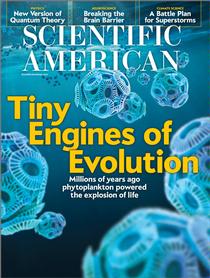 On its way from flight to fossil, an ancient beetle’s wings lost their color and then their form. Slow-baked and squished by sand, the glittering green wings darkened and turned blue, then indigo, then black.
On its way from flight to fossil, an ancient beetle’s wings lost their color and then their form. Slow-baked and squished by sand, the glittering green wings darkened and turned blue, then indigo, then black.
That tale of an insect’s life, death and fossilization sounds simple enough, but it took paleobiologist Maria McNamara years of painstaking work to piece together. The University of Bristol researcher wanted to know how ancient insects’ warning signals, camouflage and mating displays evolved. Studying ordinary fossils tells only part of the story, since most fossilized insects are black today, probably because they lost their colors while buried underground.
McNamara and her team decided to work backward. They artificially aged modern beetle (shown above) and weevil wings to figure out how fossilization might affect color. They reported their results in Geology in April.
Fossilization is not a gentle process. To simulate it, McNamara left the insect wings in pond water for 18 months, then baked them at temperatures as high as 518 degrees Fahrenheit, hotter than most home ovens, and pressures almost 500 times the atmosphere’s to simulate the crushing and heat that converts mud-trapped debris into subterranean stone fossils. The team found that the process broke up and thinned out the beetles’ reflective shells, changing the wavelength of light that they reflect, from green to blue to black.
More important, they found that the weevils maintained color-producing structures known as photonic crystals, which could mean any fossil without these structures probably never had them. McNamara concludes that photonic crystals must have evolved recently, at least in weevils, because she examined three-million-year-old weevils that lacked them.
Some scientists disagree. Andrew Parker, an entomologist at the Natural History Museum in London, notes that “every fossil goes through a completely different process,” so it will be difficult to generalize lessons from one species or fossil to others. But he finds the idea tantalizing: “We can start to add up a picture and put together scenes of what life would have been like in color.”
First published in Scientific American: [html] [pdf].
Publicado en español por Investigación y Ciencia: [pdf].